Lost Valley Educational Center
Communes come in varying stripes of organization, although even the most anarchistic--Wheeler Ranch, where I lived when I created Living On The Earth--now has some structure, including a modest rent and some minimal rules of conduct. Lost Valley Educational Center functions with a high level of sophistication, although, upon inspection, maintains a gentleness and welcome indifference to perfectionism. I dug the vibe a lot. They function as a land-based communal residence, a land stewardship (reclaiming forest land that has been abused), a conference center (mostly for Buddhist and shamanic retreats), a school (mostly for gardening and sustainable technology), a magazine publishing entity, and a 501(c)3 not-for-profit educational organization.
I think, from here on out, I will quote from an article by Chris Roth, editor of Talking Leaves, the magazine published by the Center, while running by my slide show of a Sunday afternoon tour of the the premises provided by Chris, along with Larry Kaplowitz, conference coordinator and associate editor of the magazine. Larry and his wife Karin lead workshops on a spiritual practice called Naka-Ima. My delightful fellow tourists were Sister Margaret Grazziano, who works with prison inmates in Eugene and wanted to learn more about intentional community, and Katherine, from New Mexico, who is investigating in search of an appropriate community for her own residence.
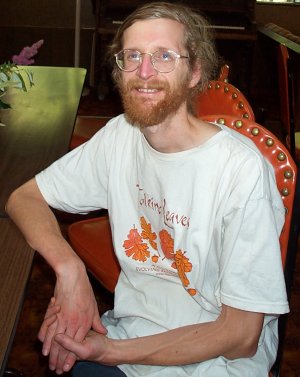
Chris Roth
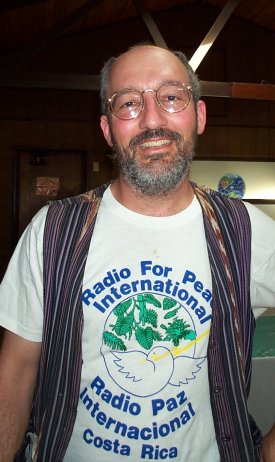
Larry Kaplowitz
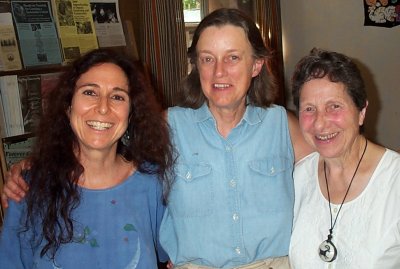
Alicia, Katherine, and Sister Margaret
Talking Leaves is produced in a very particular social context, one taken for granted by us editors, but probably unfamiliar to many of our readers. Established ten years ago, Lost Valley Educational Center stewards eighty-seven acres of land in the foothills of Oregon's Cascade Mountains. Inheriting an extensive infrastructure built by the Shiloh Youth Revival Center in the 1970's, Lost Valley not only publishes Talking Leaves, but also hosts conferences, runs educational rpograms about sustainable and cooperative living skills, and puts significant energy into its own ongoing experiment in intentional community living.
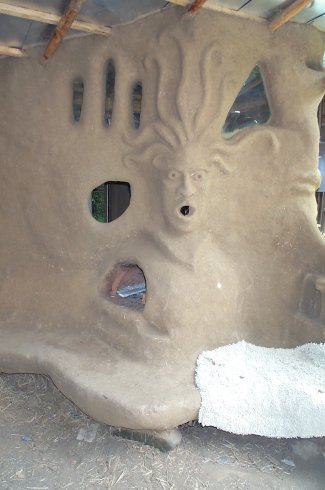
Outdoor seating area with fireplace (the
mouth exhales
smoke) made of cob (mud and straw) construction
created by cob sculptor Becky Bee.
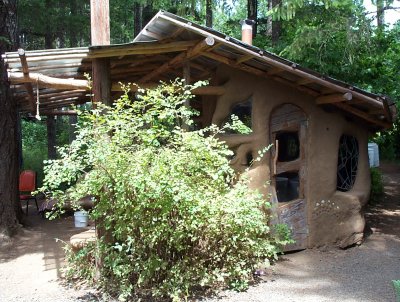
Side view of the same structure; inside
the back door and the
stained glass window is the community pay phone booth.
The human population here currently numbers fifteen adult members and eight children. Program participants frequently expand our population to thirty, forty, fifty and more, and conference gatherings of one-hundred-and-fifty are not unheard of.
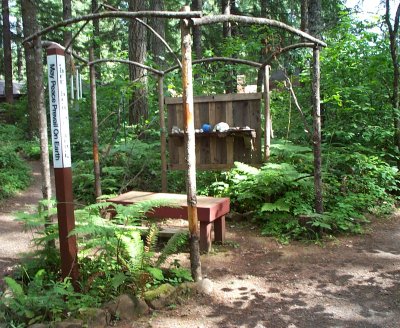
Forest memorial to Dannon Perry, founder of the Earth Stewards
We come together through a shared commitment to certain values and ideals not universally evident in the larger society. In one way or another, we all resonate with Lost Valley's mission statement: "to create and foster mutually beneficial relations between humans and all parts of the web of existence."
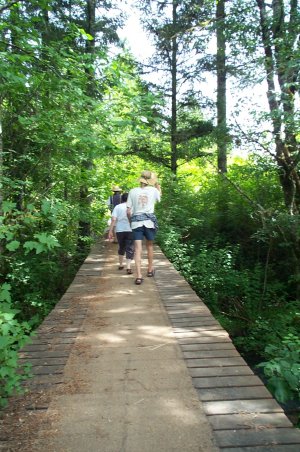
Bridge to the Creek Garden
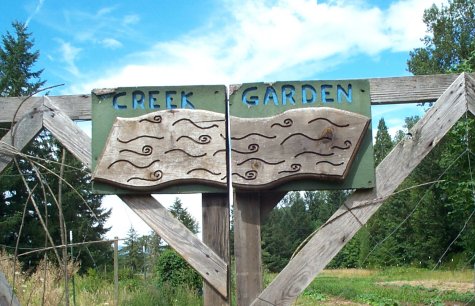
Creek Garden Gate
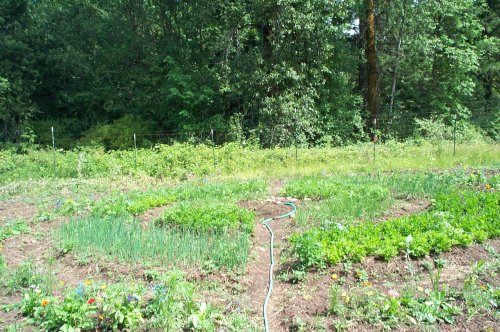
Concentric circular rows in the Creek Garden
...a number of ingredients...make community living a wholesome alternative to "mainstream culture". Some of the positive attributes of our situation also have their downsides, of which we are aware. On balance, though, the benefits outweigh the drawbacks, most of the time, for most of us.
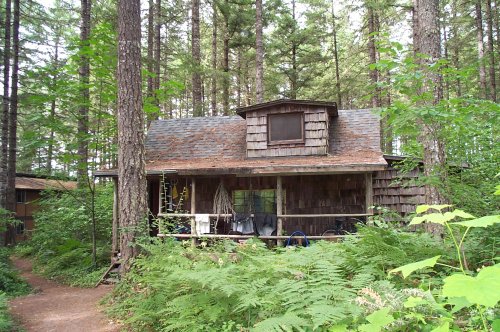
A staff bungalow, and dormitories used as conference housing in the background
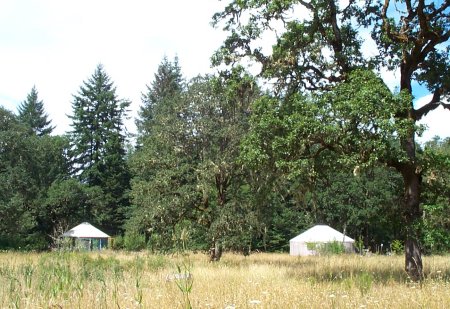
Senior staff members live in these yurts along the edge of the meadow
Here are some of the nuts and bolts:
Variety in Work: None of us has only one job...All of us share in certain areas of the community's work--for example, cooking for conferences--and most of us get involved at one point or another in most of our areas of activity.
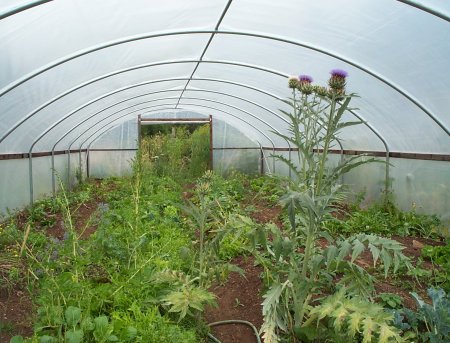
Greenhouse interior
Interdependence: In the same way that no individual has just one area of work, no area of work has just one individual supporting it.
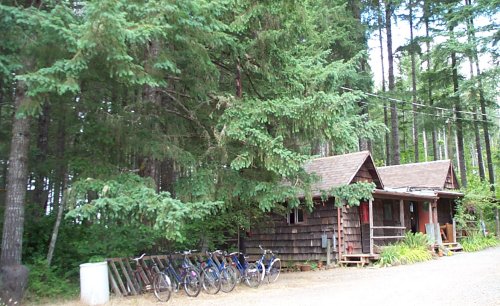
Bicycle parking by the staff dormitory buildings
Support: We are interdependent not only in our work lives, but also in the maintenance of one another's well-being. When one of us is physically sick, the members of that person's "care patrol" will make sure that all needs are met...More regularly and more importantly, we also support one another's emotional well-being. Our weekly well-being circle is an inviolable two hour block during which we come together as a community to support one another in our struggles, celebrate one another's joys, and become closer both as individuals and as a group.
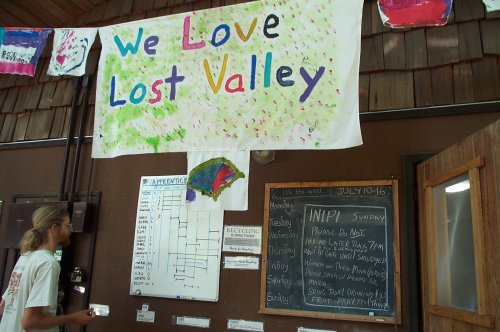
Work flow charts and chalk board outside of the kitchen.
Intimacy and Honesty: No one can "hide" for long at Lost Valley. People here want to know about one another and share their lives with one another... Physical distancing and lack of touch are good indicators of stress...honesty is a habit that becomes easier the more one engages in it.
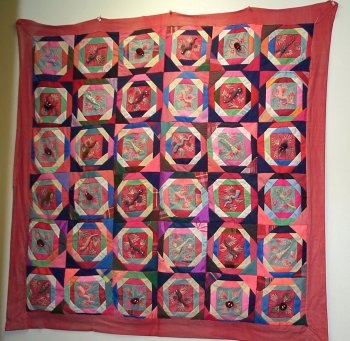
Quilt displayed in the women's lavatory near the dining hall.
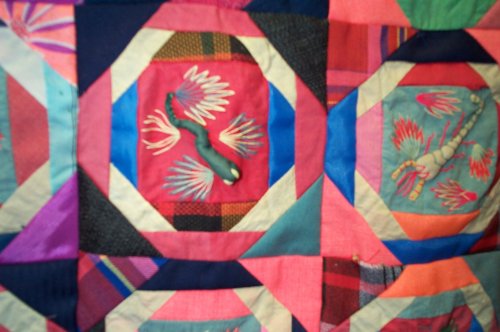
Detail of the quilt above. Each square has a little animal embroidered in it.
Non-attachment to Dogma: A great diversity of ideas, opinions, and styles coexists at Lost Valley, despite the common elements articulated in our mission statement.
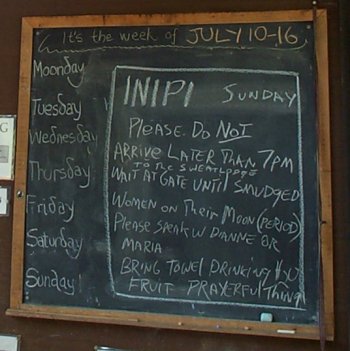
Instructions for sweat lodge participants on the kitchen chalkboard.
Tribal Feeling: Those who live here and visit here experience, and help shape, the shared culture we are creating.
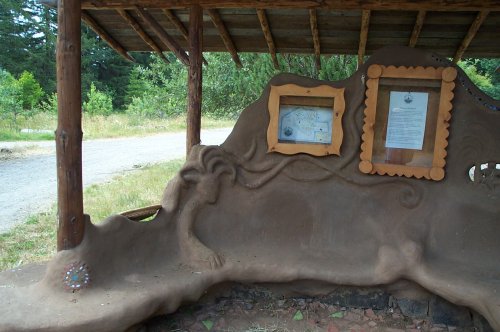
Cob kiosk created by Becky Bee, the
same woman who made the phone booth/outdoor
seating structure behind the kitchen, assisted by
apprentice Marna Hauk.
Framed are a map of the land and the mission statement of
the organization.
Becky lives in southern Oregon and teaches workshops on
cob building/sculpting.
Human Scale: At the same time that the Lost Valley community...is much larger than the typical nuclear family, it is not overly large. There is great safety and comfort in knowing all of one's neighbors, and security in knowing that one is loved and recognized for who one is.
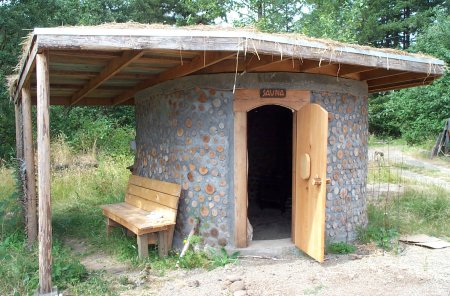
Circular community sauna built of logs with cement mortar
Connection with Land: We grow a significant portion of our diet in our gardens, are reforesting and stewarding the recovering twelve-year-old clear cut that occupies forty-five of our acres, have a number of permaculture plantings and projects, and derive various building and other useful materials from our land. Equally important is the spiritual sustenance the land gives us.
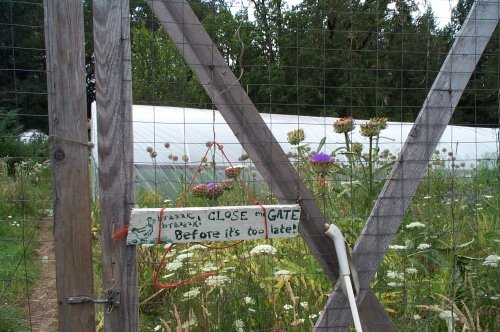
Chicken warning at the greenhouse gate.
Rituals and Festivals: Our major challenge in this area is creating rituals which reflect our diverse spiritual paths while still bringing us together. We seem to have enough in common that small differences are not obstacles to our ability to celebrate together.
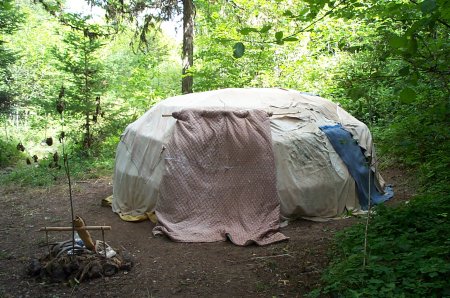
Sweat Lodge in preparation
Shared Meals, Shared Infrastructure: By sharing those things that support our lives physically, we conserve resources, have more chances to get to know one another, and free up more time and energy for those things which support our lives emotionally and spiritually.
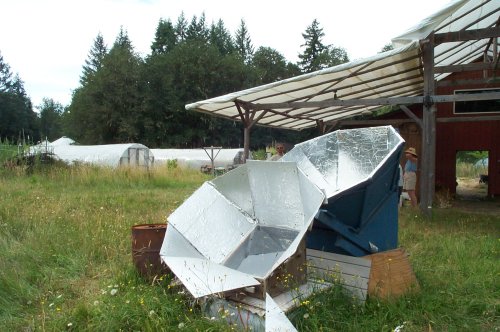
Solar ovens at the outdoor kitchen; greenhouses nearby
Shared Lives, Shared Joys, Shared Heartbreak: As each of us grows and changes, we all share in it.
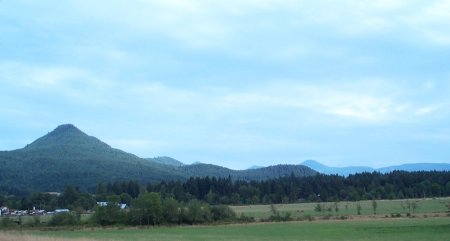
View of the greater Lost Valley area from Rattlesnake Road
Education, Outreach: ...we seem to have a compulsion as a group to put on educational programs and engage in other forms of outreach. The exchange goes both ways: we learn just as much from those...we reach out to...as they learn from us.
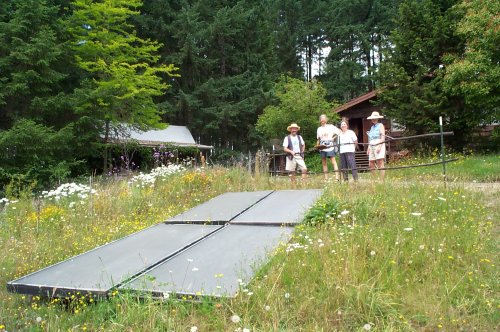
Tour members are impressed by the large solar water heater.
Experimentation: In our personal growth workshops and also in our daily lives, we frequently challenge ourselves to stretch our own boundaries and comfort zones, saying the thing we are afraid to say or doing the thing we are afraid to do. We also constantly experiment with new educational programs and even new organizational structures...new gardening methods and earth-building techniques.
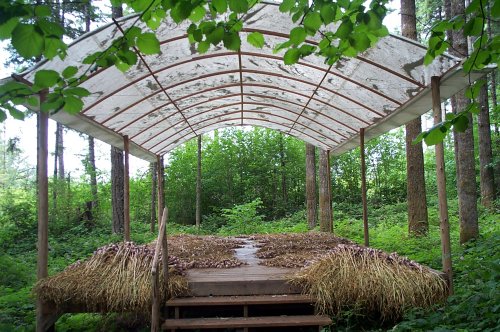
Drying and sorting garlic bulbs. The largest ones seed next year's crop.